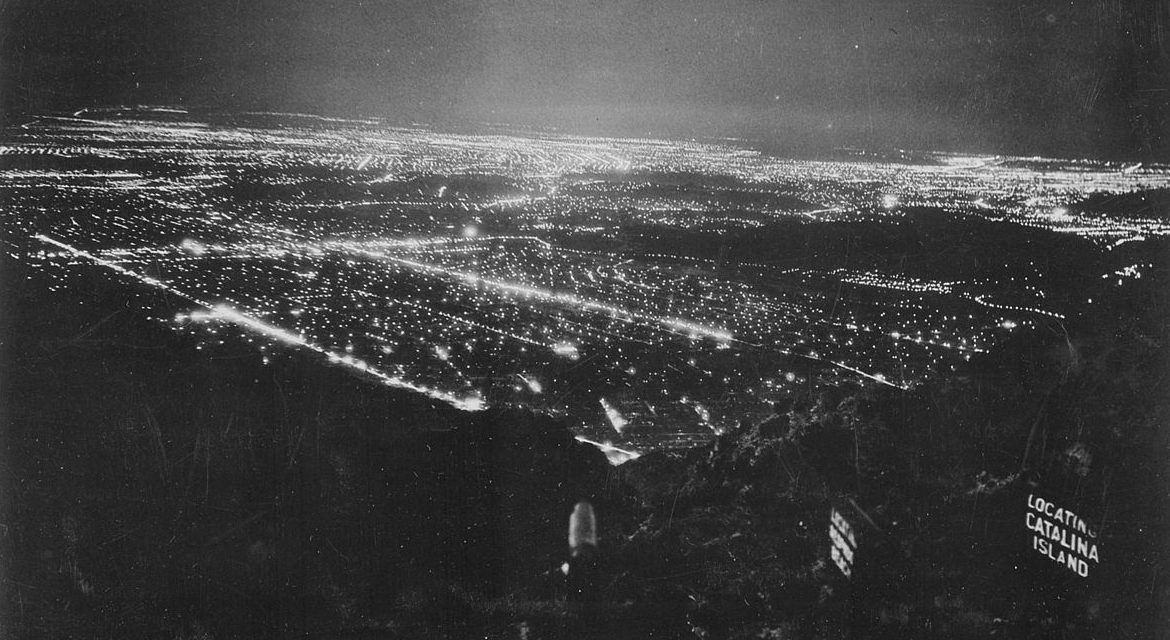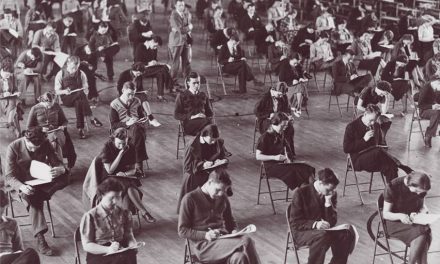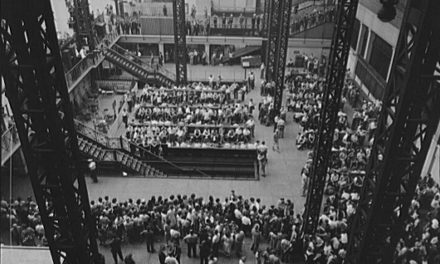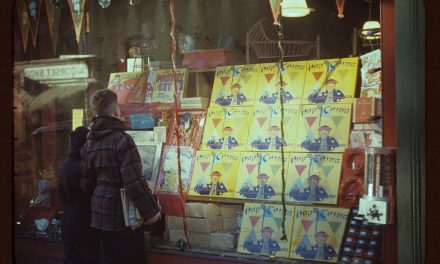In the early morning hours of Feb. 25, when darkness shrouded the coast of California, areas from Santa Monica to Long Beach blacked out after an unidentified object was spotted flying over the Pacific coast.
At 2:25 a.m., the IV Interceptor Command, a unit of the United States Army air force, ordered the blackout after a slow-moving object was noticed in the dark sky. Spotlights focused on the unidentified object, and upward of 1,400 rounds of anti-aircraft artillery were blasted into the sky, yet no enemy objects were shot down – in fact, the artillery fire had more effect on civilians than it did on the unidentified flying object.
“Although reports are conflicting and every effort is being made to ascertain the facts, it is clear that no bombs were dropped and no planes were shot down,” the western defense command said.
Numerous witnesses said that they had seen hundreds of enemy airplanes in the sky. Some reported that there was only one. Others speculated that the aircraft was a blimp, because of the slow pace at which it crept along the Pacific coast; the object reportedly took half an hour to travel 25 miles, far longer than it would take an airplane. However, veteran lighter-than-air experts in Akron, Ohio said that the Japanese lost interest in blimps after World War I.
As witnesses speculated about what the object was, Secretary of the Navy Frank Knox reported later on Feb. 25 that no planes were flying over the Los Angeles area and that the blackout was just a “false alarm.” The unidentified object, pictured flying in the sky and seen by countless witnesses, remains a military secret.
Although the situation is a mystery, the damage that this “false alarm” caused is undeniable.
The incident, which is being coined the Battle of Los Angeles, comes three months after the attack on Pearl Harbor and just two days after the bombardment of Ellwood, the first enemy attack to hit the continental U.S. – a Japanese submarine shelled the Ellwood Oil Field, located on the California coast near Santa Barbara. The coastal raid did not result in any deaths or injuries, despite actual hostile artillery fire. Though no enemy fire occurred during the Battle of Los Angeles, it resulted in the death of two civilians.
E. Larson, 59, was a Long Beach police sergeant killed during a traffic accident while attempting to make his way to an air-raid post. Henry Eyers, 63, died while behind the wheel of an ammunition truck. Medical examiners said that a heart attack, which was caused by strain from the blackout, was Eyers’s cause of death.

The once sprawling lights of greater Los Angeles were pure darkness on the morning of Feb. 25. From Wikimedia Commons.
Death wasn’t the only tragedy that occurred during the “raid,” as countless properties and homes were damaged due to falling anti-aircraft shells and artillery. Of the many homes that experienced destruction, two were severely damaged, numerous windows shattered and furniture mangled.
Hugh Landis was one of the hardest-hit civilians when it came to damage to his home. A faulty anti-aircraft shell that was meant to be shot at the unidentified flying object had a broken fuse – it failed to explode in the sky and instead fell right into Landis’s backyard, where it finally burst.
Landis’s home was sprayed with shattered steel, damaging furniture inside. Holes were even torn in the gas tank of Landis’s automobile. He took some solace in the fact that his tires remained unharmed, given that it might be impossible to replace them due to the current rubber shortage.
The military remains firm that the blackout was a false alarm, despite witness testimonies that they saw an aircraft in the sky.
Sources:
“Army Guns Open Up at Unknown ‘Foe’” Life, March 9, 1942, p. 23.
Associated Press. “Anti-Aircraft Guns Blast At LA Mystery Invader.” Glendale News Press, February 26, 1942.
“No music! Army vs. UFO (1942; Los Angeles). Captured on Film w/CBS Radio Report of Battle.” Perf. Youtube.com. CBS. 18 July 2010. Web. 17 Oct. 2016.






DAS CRAZY
Just another cover up from the government. Great article. Thank you!
Joditorkelson8@msn.com
Another related topic we didn’t get to cover (but that the article mentioned) was the bombardment of Ellwood in Southern California — an actual Japanese attack on the US mainland shortly before the “Battle of Los Angeles.”
Another story along with this about the Battle of Los Angeles could be:
“Long Beach, California: Early reports this opening month of 1942, included resident statements, hearing tanks rumbling along Long Beach Blvd and Atlantic Blvd, heading towards the beaches areas to establish defensive positions against any possible threats of invasion from the Pacific reaches west of California. Residents, under blackout conditions were awakened in the from their sleep by these sounds of heavy military vehicles moving westward from more inland areas. Tight security has been imposed upon the Southern California areas pending further developments.”